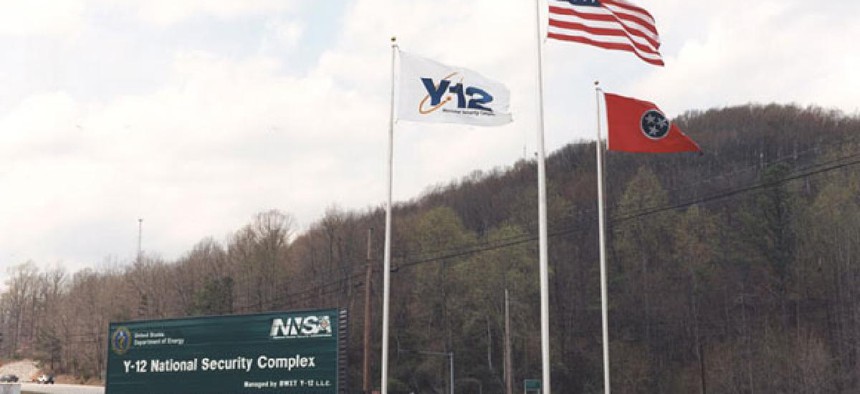NNSA selects new firm to manage two nuclear arms sites
Contract is expected to save $3.27 billion over a decade.
The National Nuclear Security Administration on Tuesday announced that it had selected a new contractor to manage two key nuclear arms facilities, one of which was the site of a high-profile security breach in 2012.
Consolidated Nuclear Security on May 1 will take over operations at the Y-12 National Security Complex in Tennessee and the Pantex Plant in Texas. It will also lead development and construction of the Y-12 Uranium Processing Facility and has the option of heading tritium work at the Savannah River Site in South Carolina.
The new contract is set for five years with an option for another five years, according to an NNSA press release. It would provide $3.27 billion in savings over the decade, the agency said.
“Our nuclear production capabilities are critical to our national security, and this contract puts NNSA in a position to improve mission delivery by generating significant savings that will be reinvested to improve safety, security, quality, and infrastructure,” Thomas D’Agostino, who will step down as NNSA chief next week, said in prepared comments. “This award will have a lasting impact on NNSA for years to come. It is the culmination of years of hard work focused on continuously improving the way we operate, saving taxpayer dollars, and aligning ourselves for the future.”
The release did not provide details of how the savings would be produced. The amount of the contract was also not immediately made public.
D’Agostino and other top agency officials were scheduled to discuss the contract later on Tuesday.
Consolidated Nuclear Security was formed by contractors Bechtel National, Lockheed Martin, ATK Launch Systems and SOC.
In Tennessee, it will take over management from B&W Y-12, a combination of Bechtel and Babcock & Wilcox that came under fire last summer after three peace activists were able to break into the site and make their way to a secure area that houses weapon-grade uranium.
B&W Y-12 was required to demonstrate why it should remain the site manager; it took on security responsibilities after the subcontracting guard firm was dismissed following the intrusion. The press release made no mention of the status of the security contract.
Y-12 hosts a number of nuclear arms and nonproliferation operations, including refurbishing warheads, processing highly enriched uranium for submarine reactors, and ensuring the security of materials from weapons that have been retired or disassembled.
The Pantex Plant conducts assembly and dismantlement of nuclear weapons. It is presently managed by B&W Pantex, a conglomerate that also involves Bechtel and Babcock & Wilcox.
The two companies decided against working together to secure the new contracts in a process that began in 2010, the Knoxville News Sentinel reported on Tuesday.
Tuesday’s announcement comes amid persistent criticism of the National Nuclear Security Administration’s troubles with sticking to cost and schedule projections for major projects in overseein the nation's nuclear arms complex. In one setback, the semiautonomous Energy Department office acknowledged last fall that the current design for the Uranium Processing Facility was too small.
The nuclear agency said the new contract would “strengthen NNSA’s ability to move toward a fully integrated and interdependent enterprise which will enhance mission performance, reduce costs, strengthen partnerships and improve stakeholder confidence.”
It placed four demands on the new contractor:
- “Improving performance in the completion of national security missions for nuclear production operations;
- Transitioning and merging operations at geographically dispersed centers of excellence for: nuclear weapon assembly/disassembly, enriched uranium, high-explosive production and tritium supply management under a single contract;
- Reducing the cost of performing work; and
- Requiring actions that support operation as an integrated DOE/NNSA enterprise.”
NEXT STORY: Obama’s Cabinet not as diverse this time



